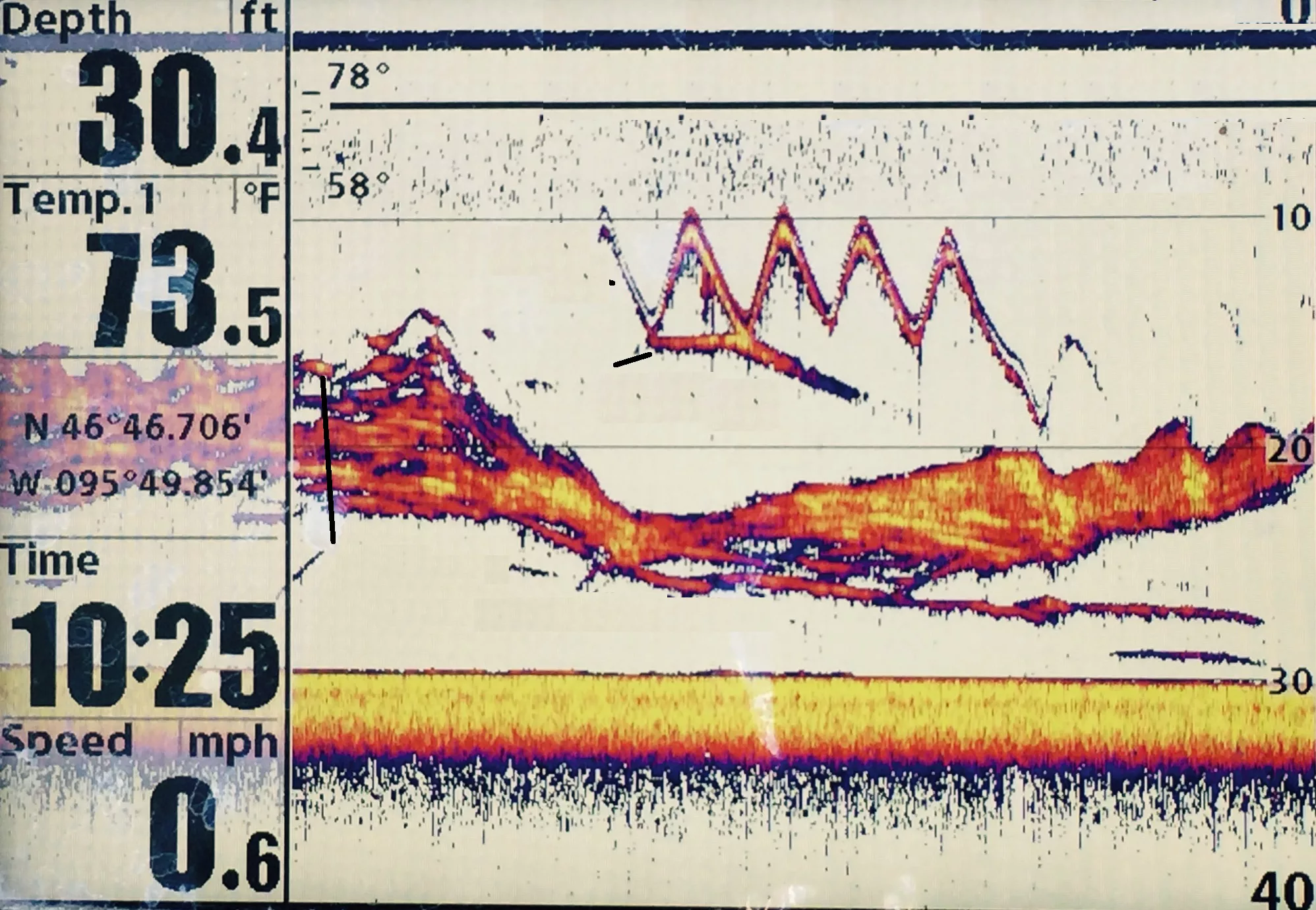
Sonar has changed a lot since early grayscale models, then full color models like this one, and now live screen readouts, but the memories that come with it are the same: fish found and caught. Simonson Photo.
By Nick Simonson
I’m a fan of old things and a fan of new things in the outdoors, as the former tells the non-fiction tale of what we’ve experienced, and the latter paints a science-fiction story of where we’ll go, all with a few good fisherman’s lies mixed in between them.
I can recall vividly the first LCD fishfinder I purchased and installed on my new-to-me boat, the oft-written about 15-foot Grumman Sportsman that powered my trips up and down my home flow. It wasn’t there though that the Humminbird Eagle 300 TX sonar, then the top of the line that I could afford, was placed into the faded gray and yellow stand which held the previous owner’s Eagle 100 model that didn’t come with my craft upon purchase. Instead, in the fading light of the Friday before Minnesota’s walleye opener, it was on the blacktop driveway of the cabin on the south shore of Big Detroit Lake that the unit with a mere five buttons snapped into place and cables were run down the side of the boat to the transducer, and the cords were tucked into the already overcrowded hasps which hung on to wiring for other facets of the craft.
It’s hard to believe now that the graph which graces the console of my fishing boat has virtually no buttons, but rather a touch screen that zooms in on far away fish off to either side, with a surface that can be pinched and pulled like that of an iPhone. Instead of the cartoonish fish-shaped icons from the 300 TX with the depth numbers next to them, which my buddy and I would read off to each other as “16-in-22” in a system we used when comparing location to depth; the length and shape and even the shadow of the fish on the newest iteration of sonar is frighteningly accurate at times as to what lurks below. Sometimes it even reveals the flat, elongated snout of a paddlefish on the river as we slowly cruise over it.
I can recall sitting over a small bend in my home river, with a cluster of fish below that quickly disappeared from the readout as we repositioned over them. They never showed up again on the screen, but we knew they remained there off the sunken point around which the current curled, as they’d thump our minnow-tipped jigs with a drop and a couple quick hops. Perhaps that now-ancient transducer and its sonar cone was too narrow to pick them up, or we were just off the edge of where they were holding, but it provided some mystery and some fun, and certainly at least gave us a clue as to where the walleyes were that sunny afternoon bunkered in the deepest hole of our favorite fishing stretch.
These days, I laugh as I watch my brother tease a muskie lurking deep in the lake with the vertical rise-and-fall of his Bondy Bait. Below the schools of young crappies and bluegills, the live action drama plays out as his foot-long offering attracts the attention of the ornery predators. Sometimes they hit, more often they don’t, but all the while the miracle of technology provides a nanosecond-by-nanosecond feed of the watery world below, an even further cry from the gray screen readout we once used to at least locate the depth we wanted to explore and perhaps take heart at the few fishy marks the primitive cones of sonar would sound back to the transducer. It truly is amazing, but when looked back on, it may only be the beginning.
For those young anglers out there, people who are just starting down this path, or those who perhaps have picked up a hand-me-down boat and sonar combination in preparation for this spring, you’ll experience this transition too, as I hopefully will continue to do with you in the next 20 years. Where sonar will go in the next two decades is anyone’s guess, but the advancements have set the stage for something completely incredible, which will likely rival the exponential change which we’ve already witnessed. Along the way, remember those successes and look back on what will one day seem primitive technology, despite being at or near the intersection of high angling technology and a watery world of fish just waiting to show up on that screen, and the end of your line…our outdoors.
